Posted On October 21, 2024 Car Accidents,Riverside
Hit-and-run accidents can be traumatic and leave victims feeling uncertain about how to get compensated for their injuries and damages. Unlike typical car accidents, where both parties exchange information, hit-and-run drivers flee the scene, often making it difficult to hold them accountable. However, even when the driver responsible cannot be identified, you still have legal options for recovering compensation.
As experienced personal injury attorneys in California, specializing in car accidents, we understand the complexities of hit-and-run cases. This guide will walk you through the steps you should take after a hit-and-run accident in Riverside, your legal options for seeking compensation, and how an attorney can help you navigate the process.
A hit-and-run accident occurs when a driver involved in an accident leaves the scene without providing contact information, assisting injured parties, or reporting the incident to authorities. In California, this is a serious offense and is governed by California Vehicle Code § 20002, which requires all drivers involved in an accident to stop, exchange information, and aid if necessary.
Drivers who flee the scene of an accident in California face severe criminal penalties. Depending on the severity of the incident, a hit-and-run can be charged as either a misdemeanor or a felony. A misdemeanor hit-and-run, which typically involves property damage, can result in fines, license suspension, and even jail time. A felony hit-and-run, which usually involves injury or death, carries harsher penalties, including longer jail sentences and higher fines.
While these criminal penalties hold hit-and-run drivers accountable, they do not directly help you recover compensation for your injuries or damages. For that, you must pursue a civil claim or rely on your own insurance.
If you are involved in a hit-and-run accident, what you do in the moments immediately following the incident is critical to protecting your legal rights and maximizing your chances of receiving compensation.
Your priority after any accident is to ensure your safety and the safety of others. Check yourself and any passengers for injuries and call 911 to report the accident. Even if you feel fine, some injuries—such as concussions or internal injuries—may not show symptoms right away, so it’s important to seek medical attention as soon as possible.
The police will arrive on the scene, assess the situation, and will create an official accident report, which will be a key piece of evidence if you pursue a claim. In the event that the police do not respond, and sometimes they won’t, your 911 call transcript can be made available and used as evidence to support the claim. This can be especially helpful to prove the impact occurred when no other witnesses are available.
While waiting for emergency responders, try to gather as much evidence as possible. Document the accident scene by taking photos or videos of:
If you or anyone nearby witnessed the hit-and-run driver, take note of details like the make, model, color of the vehicle, and any portion of the license plate number you can remember. Witnesses may also have valuable information, so ask for their contact information and a brief statement.
In any hit-and-run case, having a police report is crucial. When law enforcement arrives, they will document the accident, gather witness statements, and begin an investigation into the hit-and-run driver. This report will serve as vital evidence when you file an insurance claim or a lawsuit. If the police do not respond, you can make a “counter report” at the nearest police station or highway patrol station.
Many hit-and-run drivers are never found, but this doesn’t mean you’re out of options for seeking compensation. California law and your own auto insurance policy can provide avenues for recovering damages even if the responsible driver is not identified.
In California, insurance companies are required to offer Uninsured Motorist (UM) coverage, which is designed to protect you if you are injured by a driver who has no insurance, insufficient insurance, or cannot be identified, as is often the case in hit-and-run accidents.
If you have UM coverage as part of your auto insurance policy, your attorney can file a claim with your own insurance company after a hit-and-run or an accident that involved someone who is underinsured. UM coverage can help pay for:
For example, if you were rear-ended by a hit-and-run driver at a stoplight in Riverside and suffered whiplash, your UM coverage may provide coverage for your medical bills, lost income due to missed work, pain and suffering, and future medicals.
UM coverage is optional in California, but it is highly recommended. In California, insurance companies must provide UM coverage and you have the option to waive the coverage, in writing. Hit-and-run accidents are all too common, and
having UM coverage can provide you with financial protection when the at-fault driver cannot be held responsible. Without this coverage, you may struggle to recover compensation for your damages.
If you have collision coverage as part of your auto insurance policy, you may be able to use it to pay for repairs to your vehicle after a hit-and-run accident. Collision coverage pays for damages to your vehicle regardless of who is at fault.
While this coverage won’t compensate you for medical bills or lost wages, it can help ease the financial burden of repairing or replacing your vehicle. Keep in mind that you may have to pay a deductible before your insurance company covers the remaining repair costs.
If the hit-and-run driver is later identified through a police investigation, you can file a personal injury lawsuit against them. This allows you to seek compensation for all of your damages, including medical bills, lost wages, pain and suffering, and property damage.
Hit-and-run cases can present unique challenges, particularly if the responsible driver is not found. Understanding these challenges can help you better navigate the claims process.
Many hit-and-run drivers are never caught, leaving victims with limited options for seeking compensation from the at-fault party. However, with the help of a skilled attorney, you can work with law enforcement to gather any available evidence,
such as surveillance footage or witness statements, to increase the likelihood of identifying the driver. A great law firm, such as ours, can be very effective of tracking down evidence and identifying defendants.
Even if you file a claim with your own insurance company under UM or collision coverage, the insurance company may try to minimize or deny your claim. Insurance companies are often more concerned with protecting their bottom line than paying out the full amount you deserve. To some degree, your own insurance company will become adversarial to your interests. Having an experienced personal injury attorney on your side can help you
negotiate with the insurance company and ensure you receive the compensation you’re entitled to.
Navigating the legal and insurance complexities of a hit-and-run case can be overwhelming, but working with an experienced personal injury attorney can make all the difference.
An attorney will help gather evidence to support your claim. This includes reviewing police reports, locating witnesses, obtaining surveillance footage, and working with law enforcement to identify the hit-and-run driver.
Insurance companies may attempt to delay or deny your claim, but a skilled attorney will handle negotiations on your behalf, ensuring that your rights are protected and that you receive the compensation you deserve.
If the hit-and-run driver is identified, your attorney can file a personal injury lawsuit to pursue full compensation for your injuries and damages.
Conclusion
Hit-and-run accidents can leave victims feeling powerless, but you do have options for recovering compensation. Whether it is filing a claim under your uninsured motorist coverage or pursuing a lawsuit if the driver is found,
a personal injury attorney can guide you through the process and help you get the compensation you deserve.
If you or a loved one has been injured in a hit-and-run accident in Riverside, contact Montgomery Steele today for a free consultation. Our experienced attorneys are here to help you every step of the way.
“Disclaimer:
The content provided on this blog is for general informational purposes only and does not constitute formal legal advice. While we strive to ensure the accuracy and timeliness of the information presented, we make no guarantees. The information provided here should not be relied upon as a substitute for professional legal advice tailored to your specific circumstances.
Your use of this blog and any information contained herein does not create an attorney-client relationship between you and our firm. For advice regarding your individual situation, please contact our office as we would be happy to discuss your case. We expressly disclaim all liability with respect to actions taken or not taken based on any or all the contents of this blog.”

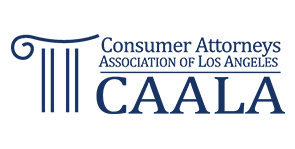
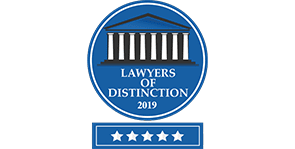
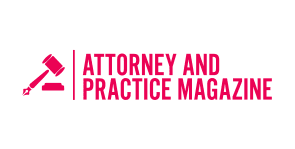

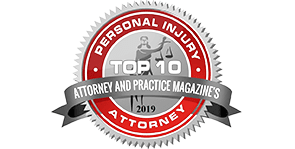

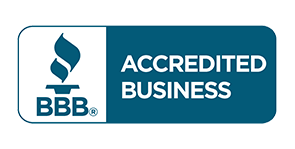

© 2022 MONTGOMERY STEELE LAW | ALL RIGHTS RESERVED | disclaimer

